Italy: Best first-time Italy itineraries for 3 days to 2 weeks
Even though Italy is one of the world’s top tourist destinations, planning your first trip there is not easy or obvious. Unlike France where most people focus on Paris or the UK where most people focus on London, Italy has at least three must-visit destinations and dozens of other great choices. Rome and Venice are the most famous two, and you should visit both of them if you can, but each has its own issues and focusing on just one or the other would be a big mistake.
As a veteran of many Italy trips and countless hours of research, I’ve written a guide below that should help most visitors choose the best places to go and how long to stay in each one. The shortest version is you should absolutely visit Rome and also spend some time in Florence and Venice if at all possible, but you’ll see below it’s more complicated than that if you want to plan the perfect trip.
By the way, if Italy is just one place you are considering you might want to check out our guide to the best first-time Europe itineraries, which covers Italy and other great choices. Or if you will also be visiting France on your first trip, we’ve got itinerary suggestions for first-time visitors to Italy and France on the same trip.
Racing through Italy will make for a miserable trip
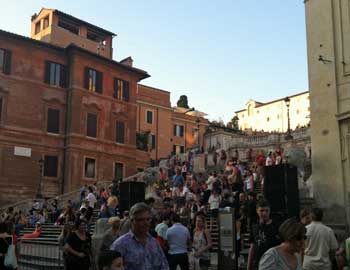
This topic comes up so often that I wrote a detailed article on why 3 nights is the best stay in nearly all European cities. Venice is a rare exception as either 1 or 2 nights is probably best, and we will discuss that below. Aside from that you really don’t want to race. If you don’t have at least 6 nights to spend in Italy, you’ll want to visit just one or two cities and then see more on a future trip.
If you've only got 3 days in Italy spend them in Rome
Venice is amazing and you’ll definitely want to see it in person at some point, and Florence is packed with many of Italy’s most interesting sights, but Rome is still the king of the hill and it’s the place you should focus if you’ve only got 3 nights in Italy. Most likely you’ll visit Rome and then realize you’ll need to come back to Italy as soon as possible, and then you can choose some of the other places mentioned below for your next trip.
Three nights gives you two full sightseeing days and those will be so packed in Rome that you’ll realize that trying to add anything else would be insane.
Rome in 3 days highlights
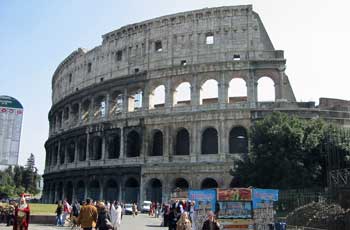
- Full day: Colosseum, Ancient Rome, Pantheon, Spanish Steps, Trevi Fountain
- Full day: Vatican Museum, St. Peter’s Basillica, Sightseeing bus tour or walking tour
During those two full days you’ll have time for lunch and a gelato and then a nice sit-down dinner near your hotel, but the main sights generally don’t stay open into the evening so you’ll usually finish sightseeing before dinner. The Spanish Steps and Trevi Fountain are always open (and free), so visiting those in the evenings can be nice.
Rome is also fairly chaotic, so 3 nights is enough for most people
As one of the world’s most famous and historically important cities, you’d be right to assume that it would be packed with amazing sights. The problem is that Rome feels fairly disorganized and a bit gritty, so most people prefer not to linger there. For example, crossing the streets near the main attractions can feel dangerous and there will be people everywhere going in all directions. That isn’t true in most large European cities, so Rome is just not a place to relax for most people.
With 4 or 5 nights you can add a day or two in Florence OR Venice
If you’ve got exactly 4 or 5 nights to spend on your first Italy trip it’s STILL recommended to do the 3 nights in Rome. Your best options are these:
- All 4 or 5 nights in Rome
- All 4 nights in Rome with a one-day Florence day trip
- Do 3 nights in Rome and 2 nights in Florence
- Spend 3 nights in Rome and take a train to Venice for 1 or 2 nights
As we’ll see just below, the shortest recommended visit to all of the Big 3 is six nights. So if you’ve only got 4 or 5 nights it’s really best to choose Florence OR Venice and save the other for your next trip. Better still, add at least one night to your Italy stay and do the best fast trip discussed just below.
6 or 7 nights in Italy: Fastest recommended trip to Rome, Florence AND Venice
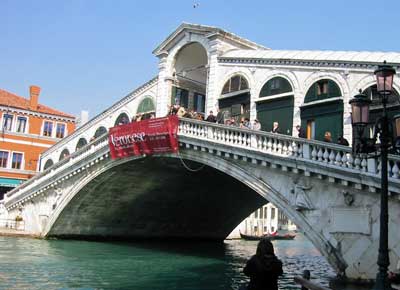
Fast Italy trip in 6 or 7 nights:
- Land in Rome and spend 3 nights there
- Take a train (90 minutes) to Florence and spend 2 or 3 nights there
- Take a train (2 hours) to Venice and spend about 24 hours there
Of course you can do these three things in the reverse order, but most long-distance flights land in Rome (or Milan) so this is the best way to do it if you are starting your trip in Italy. On the other hand, if you are coming from France or Switzerland it’s much easier to go from there to Venice and end your trip in Rome.
Why you want to go to Florence
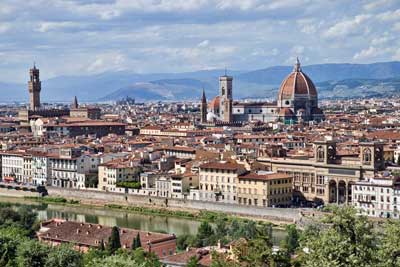
If all of that weren’t enough, Florence is also about 90 minutes by train from Rome and under 2 hours by train from Venice, so it’s the ideal place to stop in between to understand Italy on a deeper level than you can if you only visit both super-crowded Rome and Venice. Also importantly, Florence is the easiest place to sample the famous Tuscan dishes (pastas, breads, desserts etc) with the freshest local ingredients. Honestly, Rome and Venice are NOT really known as culinary cities but Florence really is one.
Basing yourself in Florence is now even easier
The hotels in Rome and Venice are generally more expensive than similar hotels in Florence, so one alternative is to base yourself in Florence for your whole trip. As of 2022, Trenitalia has finally added a new high-speed train directly from the Rome Airport to Florence. Honestly, Rome and Venice are relatively hectic and Florence is more low key, so going straight there might be the low-stress way to visit Italy’s Big 3.
Highlights of Florence in two full sightseeing days
The highlights of Florence aren’t quite as famous as those in Rome, but many travelers decide this is their favorite stop in Italy.
- Florence Cathedral and Giotto’s Tower (Famous and worthwhile)
- Uffizi Gallery (Birth of Venus and Primavera by Boticelli)
- Accademia Gallery (Michelangelo’s David)
- Ponte Vecchio Bridge and Palazzo Vecchio (Famous bridge and plaza)
- Tuscan food, gelato, and wine
>>>Florence prices and travel tips
Why go to Venice and why not stay too long
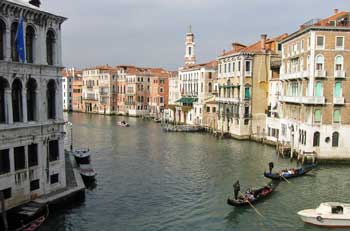
That said, Venice is packed every day of the year with tourists, cruise passengers and day-trippers on bus excursions, to the point that it’s frustrating. Think about Venice as a theme park such as Disneyland or Disney World. It’s amazing to visit them for the first time ever, but after dealing with those crowds all day the idea of spending a second day there is a bit less appealing.
Highlights of Venice in 1 or 2 sightseeing days
The main attraction is wandering around and enjoying the views of the canals and gorgeous buildings, not to mention the gondolas.
- St Mark’s Square (crowded all day and lovely at night)
- St. Mark’s Basilica (cathedral overlooking the square)
- Rialto Bridge (Venice’s most famous sight)
- Doge’s Palace (The main palace and museum if you only see one)
Spend 24 to 48 hours in Venice if you can
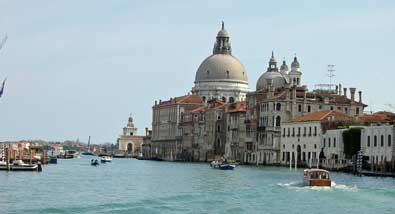
The key is to splurge a bit for a hotel or hostel on the main island and preferably near St. Mark’s Square. The restaurants around the square are full in the evenings, but most of the walkways are not so you’ll be able to appreciate Venice in a way that the day-trippers can’t. Spending one night is enough as long as you use the evening and morning for some exploring, and two nights is better as long as you avoid the worst of the crowds in the middle of the days.
Places to add if you've got 8 or more days in Italy
Needless to say, if you’ve got 8 or more days on your first Italy trip you’ve got the option of staying even longer in Rome, Florence, and/or Venice. But in my experience most people want to move quickly and see more things so I’ll discuss the best options for those who want to see more.
Day trips from Florence (1 to 4 additional days)
Another popular reason to stop in Florence on your way between Rome and Venice is that it’s the ideal base for most of Italy’s best side trips. You can literally stay a week in Florence doing something really great every day, so it’s all down to how much time you have.
Pisa (half day)
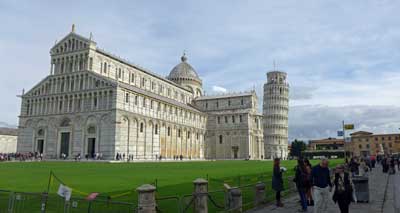
Cinque Terre (1 to 2 days)
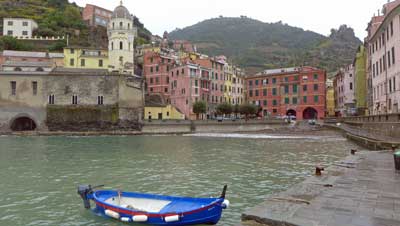
The most photographed village in the Cinque Terre is Vernazza so if you want to take a train from Florence and visit just one, that’s probably the best one. When the weather and conditions allow you can hike between the five villages (for a fee), although the path isn’t easy in some spots. The thing is, this area is packed from June through September and the weather is really lousy from December through February (at least most of the time). March, April, October, and November can be nice with decent weather and smallish crowds, so that is something to consider.
Siena (1 day)
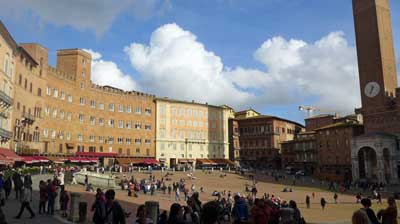
The large brick town square is one of the top attractions and it’s a nice place to eat or relax except during the two days per year (July 2 and August 16) when the square hosts a horse racing event that packs the place with enthusiastic locals. The nearby cathedrals are also notable and worth a look.
Tuscan hill towns (1 or 2 days)
Tuscany has many hills surrounded by valleys and most of those hills have medieval or older towns built on top of them for defensive purposes. Some of them are reachable by train (at least the area below the towns), while others are best reached by rental car. Visiting one or more of these cities is a wonderful contrast to the busy cities because they are truly small and simple towns with great local food and wines on offer.
Montepulciano, Montalcino, San Gimignano, and Volterra are some of the better ones, although each can get pretty crowded on popular summer weekends.
Milan (1 day, if that)
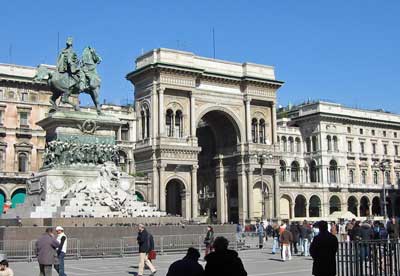
Aside from those things, Milan probably isn’t worth a special stop. It’s the main transit hub for long-distance trains so there’s a decent chance you’ll be at least visiting the main train station. If you do decide to stay it’s probably best to make it just one night. Trains from Switzerland to Venice will change in Milan, so if you’ve got time that could be a good time for a visit.
>>>Milan prices and travel tips
Lake Como (1 or 2 days)
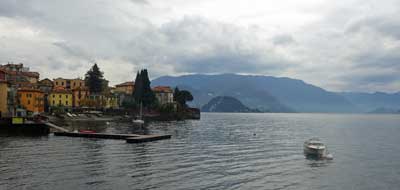
The easiest town to reach by train is Varenna (about an hour from Milan Central) and from there you can take frequent and inexpensive ferries to Bellagio, Menaggio, and other small towns. From November through March Lake Como is pretty dead and maybe not even worth the trip. In fact, many of the shops are closed in these months and so are some of the restaurants.
Southern Italy (1 to 5 days before or after Rome)
If this is your first trip to Italy it’s probably best to focus on the places mentioned above, but you’ve got some interesting options a bit south of Rome as well. I’d recommend focusing your next Italy trip on the section below, and you might include a visit to Sicily as well.
Naples (Day trip from Rome or Sorrento)
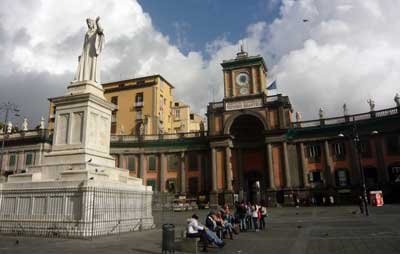
Naples is also famously gritty and somewhat dysfunctional with almost no green space and a history of problems with petty crime. For those reasons many people choose to just visit during the day to have a look and visit the amazing Naples National Archaeological Museum, which houses many of Pompeii’s greatest finds.
Actually, as of 2024, reports are that Naples is emerging as a popular tourism city again and that its attractions are crowded. If you can find a hotel in the tourist area and focus your stay in areas where there are plenty of other tourists around, it sounds like it’s as safe as the other cities now, or close to it. Still, this is not a place to just go wandering around on your own after dark.
>>>Naples prices and travel tips
Sorrento (1 to 4 days as a base to explore the whole area)
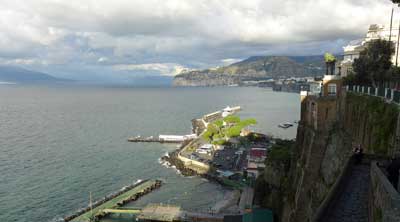
Sorrento is a lovely seaside town that is an ideal place to base yourself to explore this part of Italy. Not only can you use it for a day trip to Naples and also Pompeii, but you can catch a bus (or taxi) from the Sorrento train station to explore the Amalfi Coast with its main highlights being Positano and Amalfi itself.
You can also take a ferry from Sorrento to Naples, as well as to the Isle of Capri, which is another famous and worthwhile destination just an hour away. The Blue Grotto is the main attraction, but shopping and eating are also popular in the warmer months. The caprese salad is named after Capri and possibly invented there as well, so it’s a good place to order one.
Options for food lovers and those looking for rural or farm visits
Since every traveler is different, let’s include two more options that should definitely appeal to quite a few first-time visitors to Italy.
Italian food lovers should consider a stop in Bologna
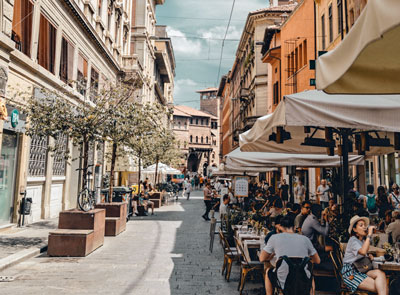
Bologna, which is conveniently in between Florence and Venice, is actually considered by almost all Italian food experts to be the culinary capital of the country. Obviously you’ll be able to find Spaghetti Bolognese, but that is just the beginning. Bologna is a big city that doesn’t get much tourism, so it’s developed a culture of outstanding restaurants that only succeed by being good enough for repeat guests and word-of-mouth. Do some research and it’s pretty easy to even stop in for lunch or dinner and a few hours on your way between Florence and Venice, or stay at least one night if you want to try multiple meals and shopping experiences.
Tuscany is far more famous, but Umbria is an interesting option for a slower pace and lower prices
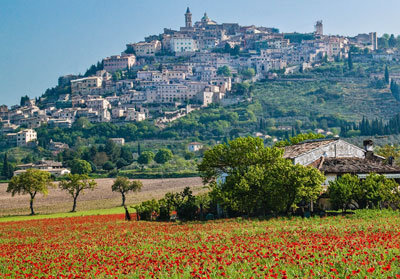
Umbria is obsessed with pork and the food is generally filling. If you’ve dreamed of staying in a working farm that rents rooms (known as Agritourismo in Italy), you’ll have many choices in Tuscany, and many other great (and usually cheaper) choices in Umbria. This might be a better choice for someone who has visited Italy before, but for some first-time visitors it will be one of the top highlights.
Bari is where to eat Assassin’s Spaghetti
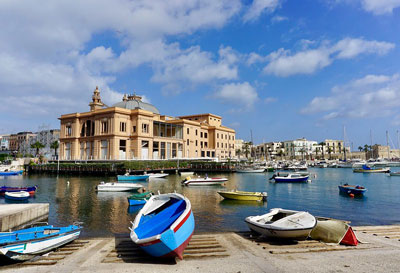
This is a spicy spaghetti dish that is made by “frying” dry pasta in a wide pan and then cooking it with wave after wave of tomato sauce to build up kind of a crust and deep flavor. I’ve visited cities for worse reasons than this so it’s something else to think about.

Hi Roger
Im going through your articles and basically i want to go everywhere! (we are over 45) We are looking to go to europe from Australia next year we will have aprox 12-16 weeks. Do you think it is good to base in London and do flights from london (we have friends we can stay with in London or would you go direct to Rome? Our main destination that we want to visit is Italy, wouldn’t mind a visit to Paris, Monaco and croatia or sicily/sardinia in the mix maybe even Greece but we do want to relax and spend at least 4-5 nights on the amalfi coast and maybe another 4-5 nights somewhere – I don’t want to overload and pack too much in what would be your must do recommendations for destinations given the time frame?
Jacqui,
I know what you mean and I want to go back to all of these places as well! If you have friends you can stay with in London I would definitely try to use that resource as much as possible, although it might depend a bit on the time of year. You could even break your Italy adventures into 2 or 3 visits from London. The first thing would obviously be flights back and forth. As long as you book at least a month or two in advance, you can probably get cheap fares from one or more London airports to several different Italian cities. And once in Italy, the high-speed trains between the major cities are cheap if you book those well in advance as well.
I’ve lived in London before and I find it very easy to get around and enjoy a pleasant time. Rome, on the other hand, is quite chaotic, especially near the Termini train station and main tourist attractions, and it could be a bit stressful if you just wanted to hang around for a week between tourist trips. If, say, you got an Airbnb in a quiet neighborhood outside of the city center, it could be nice, but you’d also be in an area where very few people speak much English.
As for where specifically to go, I’ve put all of my best recommendations for both countries into the article above. I’ve yet to visit Sardinia myself and I’ve heard it’s not quite as tourist-friendly as the popular regions in Italy itself. I’d probably focus on the more famous places in Italy on a first trip. Again, once you get outside of the popular tourist cities, very few people will speak any English.
My recommendations would depend on the specific months you’d be there. For example, on the Amalfi Coast, the main beach towns are overflowing in July and August, very pleasant in June and September, and mostly closed down from January through March.
As for Greece, I’d recommend spending maybe 2 or 3 days in Athens and then take a flight or ferry to one of the islands. I’d avoid Santorini and Mykonos because people are saying that they are so insanely crowded these days (at least in summer) that they are hard to enjoy. Rhodes, for example, is larger and less crazy, although there are dozens of other options. Just try to pick an island that doesn’t also have cruise ships stopping there.
I’m happy to try to help more if you tell me when you are going and maybe a bit more about what you are looking for. -Roger
Hi Roger
My husband and I are going to middle & northern Italy in March 2023 for 4 weeks. We will be hiring a car in Rome and intend to visit Florence, Bologna, Rome, but I love the smaller towns like Brescia and Spoleto (actually my favourite place in the whole of Italy). I have one day left on my itinerary and not sure how to spend it. Would you say any extra time should be spent in Lucca, Parma or Brescia where I already have a couple of days in each. No Venice for me, too busy.
Thank you so much. Your website is a beaut.
Jackie
Australia
Jackie,
This sounds like an amazing trip and I wish I could help more. I must admit that I’ve yet to visit any of the three towns you mention, although I’ve heard good things about Lucca and Parma. My hunch is that you’ll be happy with whichever one you choose, especially since you already seem to know the area well.
The one thing I would be looking into is how well each of them is suited for cars. As you know, Italy’s largest cities are not really auto-friendly, and many of the smaller ones are not car-friendly as well. Since those are all mid-size towns I’d think finding parking would not be too difficult, but I’m not really sure. For example, the Siena city center is not a place I’d want to be driving around or parking.
I’ve also heard a lot of good things about Modena and the videos look beautiful. I’m going to try to visit there on my next Italy visit next year. Sorry I couldn’t be more help! -Roger
Hi Roger. If I have only six or seven days in Italy, is it possible to base myself in Rome the whole period and just take a one day trip to Florence and then another one day trip to Venice? I find it’s a hassle to hop from city to city and book an accommodation for just an overnight stay or two? What do you think? Thank you in advance for your advice.
Mae,
Visiting Florence on a day trip from Rome could be okay, especially if you are staying fairly close to the main Termini train station in Rome. The high-speed train takes a bit under 90 minutes and the best sights in Florence are all fairly close to the train station there. However, Rome to Venice on a day trip would be kind of a slog. The train takes almost four hours each way, and then getting from the Venice train station to St. Marks Square will probably take another 30 minutes. I’d highly recommend staying in Venice for at least one night if you want to visit.
Another thing to consider is that Venice small and it can be insanely crowded during the middle of the day, so you’d get the worst of that. Tens of thousands of people visit Venice on day trips on bus excursions and cruises and so forth, so the city is packed from 10 AM through about 4 PM each day. Before or after that it’s much more pleasant and far less crowded. If you pack light (a good idea anyway) then changing hotels shouldn’t be too challenging compared to the rewards. I hope that helps. -Roger
Comment*I’m so happy I found your post. We’re booked for NY to Milan 9/29-10/10 following your advice we need to move around Italy. What should be our itinerary? Should we do a day trip to Switzerland or Lake Comp or both?
Mimi,
I’m glad you found it as well. Honestly, I put all of my best advice for Italy itineraries into the article. Don’t plan on spending any or much time in Milan. And if you have a couple of days I’d highly recommend Switzerland over Lake Como. Head to the Interlaken area for the best experience. I have several articles about it on this site. I hope that helps. -Roger
Comment* planning a trip for June wanting to go to Paris Amalfi coast and Sicily… Thoughts on all of it would be appreciated
Leslie,
I’m happy to help if you narrow the question a bit. I’d plan on at least 9 days, with 3 days in each place at a minimum. Getting between these three isn’t too easy. You could fly from Paris to Naples and then take a train to Sorrento as a base for exploring the Amalfi Coast. The trains between Naples and Sicily are quite slow and it would take a whole day, so it’s better to fly from Naples to Palermo and explore from there.
Let me know any specific questions and I’ll be happy to answer. -Roger
Thank you very much for this, Roger!
We really wanted to join a group tour to Positano and Amalfi for our extra day in Rome. But i find it very expensive. 🙁
Or do you think it’s worth it?
Choosing between Naples Pompeii or Positano Alamfi for our extra day. Which would you recommend?
Thanks!
Elaine
Hi Roger! Flying to Italy early next month! Thank you so much for answering all my questions. you have been a big part in my Euro Trip planning 🙂
We will be staying in rome for 4 nights. Was planning to do a day trip somewhere. What can you recommend?
And also. Do you recommend i stay longer in Madrid or Barcelona?
Because i read that there are much more things to see and do in Barcelona than Madrid.
Is the day trip to Toledo worth it? Can i do it on my own? or you suggest i join a tour group?
Thanks!!
Elaine
Elaine,
I’m happy to have helped. You can reach quite a few great places as day trips from Rome. If you are already covering Florence and Venice as full stops I’d go south of Rome on a day trip. You can reach Naples in about 90 minutes on a high-speed train and that is a great day trip to visit the home of pizza and see the famous archeological museum. From Naples you can take the Circumvesuviana train about 30 minutes south to reach the Pompeii ruins, which are also amazing. If you start early from Rome you can spend a few hours in Pompeii and also spend a few hours in Naples and still make it back to Rome for dinner if you like.
Barcelona has become a booming tourist destination in the last 10 years or so, but Madrid is still the capital and it’s loaded with great sights as well. My recommendation is three nights in each city. If you have one more night then Barcelona could be a good choice, but using it for the Toledo day trip from Madrid might even be better. You don’t need to go on a group tour of Toledo unless you prefer it. The train from Madrid to Toledo leaves at 50 minutes past every hour and only takes 33 minutes to reach Toledo. From the train station there it’s a pretty short walk to the historic town center and all of the sights are close together. You can also take the hop-on, hop-off bus tour of Toledo, which I enjoyed a lot. It stops at the train station, and that saves you the uphill walk into town. You can see all of the main sights from the bus as well as great views of the town from different angles, and then walk to various sights on your own from the closest bus stops. Let me know if you have any other questions. -Roger
Hi,
How do you book train tickets with the interrailpass in Italy? I have been looking everywhere on the website and cannot figure out how to do it.
Celine,
It is definitely confusing at first. Actually, the Interrail Pass covers your “train ticket” so all you need to do is book a seat reservation if you want to travel on one of the lines where they are necessary. In Italy the high-speed trains between the larger cities all require a seat reservation. They tend to be about €10 each, but they often include a drink (including beer or wine). It looks like you can make seat reservations through Interrail using their reservation service.
But you should be able to make seat reservations from the official Italy rail website. It might ask you to verify that you have a Eurail or Interrail Pass to be sure you are getting the right thing. And you can also make seat reservations in person at train stations, but of course by that time it’s possible that the seats will be sold out, so it’s best to do it at least a day or two in advance. Let me know if you have any other questions. -Roger